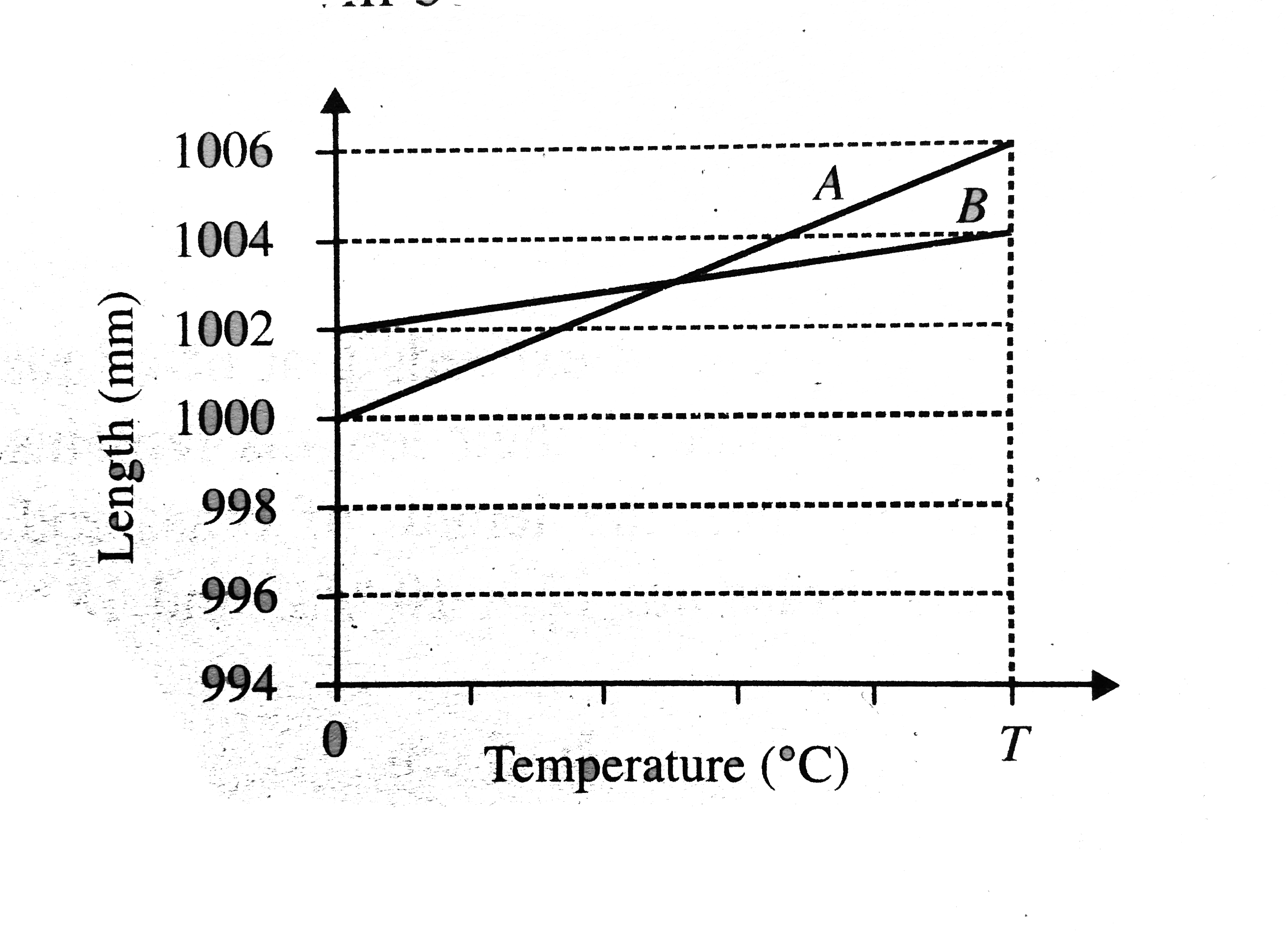A rod, of length L at room tempera ture and uniform area of cross section A, is made of a metal having coefficient of linear expansion α/∘C. It is observed that an external compressive force F, is applied on each its ends, prevents any change in the length of the rod, when its temperature rises by ΔTK. Young's modulus, Y, for this metal is :
fAαΔT
FAα(ΔT−273)
F2AαΔT
2FAαΔT
To find the Young's modulus Y of the metal rod under the given conditions, we can follow these steps:
Step 1: Understand the Problem
We have a rod of length L and cross-sectional area A made of a metal with a coefficient of linear expansion α. When the temperature increases by ΔT, an external compressive force F is applied to prevent any change in the length of the rod.
Step 2: Determine the Change in Length
The formula for the change in length ΔL due to thermal expansion is given by:
ΔL=L⋅α⋅ΔT
This indicates how much the rod would expand if no force were applied.
Step 3: Relate Change in Length to Strain
Since the rod does not change in length due to the applied force, we can express the strain ϵ as:
ϵ=ΔLL
Substituting the expression for ΔL:
ϵ=L⋅α⋅ΔTL=α⋅ΔT
Step 4: Calculate the Stress
Stress σ is defined as the force applied per unit area:
σ=FA
Step 5: Use the Young's Modulus Formula
Young's modulus Y is defined as the ratio of stress to strain:
Y=σϵ
Substituting the expressions for stress and strain:
Y=FAα⋅ΔT
Step 6: Simplify the Expression
Thus, we can write:
Y=FA⋅α⋅ΔT
Final Answer
The Young's modulus Y for the metal is:
Y=FA⋅α⋅ΔT
---
We have a rod of length L and cross-sectional area A made of a metal with a coefficient of linear expansion α. When the temperature increases by ΔT, an external compressive force F is applied to prevent any change in the length of the rod.
The formula for the change in length ΔL due to thermal expansion is given by:
ΔL=L⋅α⋅ΔT
This indicates how much the rod would expand if no force were applied.
Since the rod does not change in length due to the applied force, we can express the strain ϵ as:
ϵ=ΔLL
Substituting the expression for ΔL:
ϵ=L⋅α⋅ΔTL=α⋅ΔT
Stress σ is defined as the force applied per unit area:
σ=FA
Young's modulus Y is defined as the ratio of stress to strain:
Y=σϵ
Substituting the expressions for stress and strain:
Y=FAα⋅ΔT
Thus, we can write:
Y=FA⋅α⋅ΔT
The Young's modulus Y for the metal is:
Y=FA⋅α⋅ΔT
Similar Questions
A metal rod of length l, cross-sectional area A, Young's modulus Y and coefficient of linear expansion α is heated to t∘C. The work that can be performed by the rod when heated is
View SolutionTwo rods of lengths l1andl2 are made of materials having coefficients of linear expansion α1andα2 respectively. What could be the relation between above values, if the difference in the lengths of the two rods does not depends on temperature variation?
View Solution
Knowledge Check
Length of wire at room temperature is 4.55 m , when the temperature increases upto 100∘C then its length becomes 4.57 m . The coefficient of linear expansion (α) of the given wire is
A5.021×10−5K−1B6.021×10−5K−1C7.021×10−5K−1D8.021×10−5K−1

The variation of length of two metal rods A and B with change in temperature is shown in Fig. the coefficient of linear expansion αA for the metal A and the temperature T will be
View SolutionA rod AB of length l is pivoted at an end A and freely rotated in a horizontal plane at an angular speed ω about a vertical axis passing through A. If coefficient of linear expansion of material of rod is α, find the percentage change in its angular velocity if temperature of system is incresed by ΔT
View SolutionA thin rod, length L0 at 0∘C and coefficient of linear expansion α has its two ends mintained at temperatures θ1 and θ2 respectively Find its new length .
View SolutionTwo metallic rods of length l and 3l have coefficient of linear expansion α and 3α respectively. The coefficient of linear expansion ofr their series combinations, is
View SolutionA cylinder of length l and radius r is heated to temperature T. A longitudeinal compressive force F is applied on cylinder to keep its length same. Find coefficient of volume expansion.
View SolutionA cylinder of length l and radius r is heated to temperature T. A longitudeinal compressive force F is applied on cylinder to keep its length same. Find coefficient of volume expansion.
View SolutionA metal rod has length L, radius of its cross-section r. Youngs modulus Y and thermal coefficient of linear expansion is α.It is clamped between two rigid supports with negligible tension. If its temperature is increased by T∘C, then force exerted by the rod on any of the supports is
View Solution
